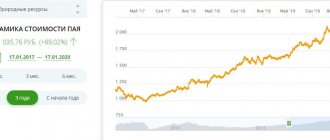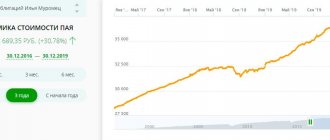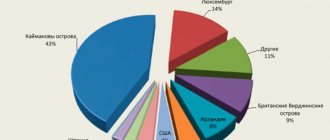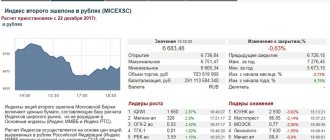Venture fund
The modern economy is a complex structure in which investments have a special place. The latter, in turn, with the simplest classification, can be divided into risky and relatively risk-free. Risk investments are also called venture investments, and here venture funds play a separate important role.
This article explains in detail what a venture fund is, how it works, how it differs from a venture capital company, and which funds are included in the TOP 10 by investment size in 2021.
- What is a venture fund
- A venture fund and a venture company are not the same thing.
- Types of venture funds
- How does a venture fund work?
- How to create a venture fund
- How to raise money from a venture fund
- Best Venture Funds in 2021
Almaz Capital Fund
The most successful domestic venture fund. Its head is Galitsky Alexander. The fund became famous thanks to its extremely successful investments in the popular search service Yandex. It is believed that the income received from the sale of the latter’s shares exceeded the 1 thousand percent mark. Of course, some of the projects were not as successful. An example is the Travelmenu booking service. It was decided to sell the company because it did not recoup the investments made in it. Many startup projects note that the fund has its drawbacks in many ways. For example, there is a complete lack of support for companies entering foreign markets. Otherwise, the venture fund is the most successful among its competitors in Russia.
Development of venture funds in Russia
The venture capital investment market in Russia developed with large participation of the state. More than 25% of organizations from the list of private equity representatives operating in the local market operate with the participation of state capital.
In Russia, historically, most venture capital comes from foreign participants. This dependence gives rise to a rather ragged development of the direct investment market in the Russian Federation: restrictions imposed by Western countries have a negative impact on the local market.
Some of the largest foreign funds are leaving Russia or reducing their investment activity.
However, there is another trend. The list of local venture companies is increasingly being supplemented by structures of large Russian corporations. State corporations VTB, KamAZ, Sberbank, Russian Railways, Russian Helicopters and others have become active participants in this market. Among the list of private companies, the joint-stock financial holding Sistema is in the lead.
How is the situation today?
If we talk about the general list of funds operating in Russia, the numbers are as follows:
- There are 189 organizations involved in direct investment.
- In 2021, investments were made in 185 fairly large startups, and 20 companies that had previously received funding exited with good profits.
- Venture capital in Russia currently amounts to almost $4.2 billion.
Kite Ventures Fund
The founder of the venture fund is Eduard Shenderovich. In 2011, an extremely profitable deal was made. A controlling stake in the Kanobu gaming portal was sold. The transaction amount is $4 million. There were also unsuccessful startup projects, for example, the clothing sales service Trends Brands. For the last few years, the fund has also been working on the foreign market. One of the successful foreign partners is the food delivery service “Kite Ventures”. About $90 million was invested in the company.
The courage of IT people
The formation of corporate venture funds in Russia has been greatly delayed compared to Europe and the USA, where the first CVCs were created back in the 1970s.
However, even there the process did not always go smoothly. By their original nature, corporate funds contain a conflict of interests: on the one hand, this is a venture, that is, a risky enterprise, and on the other, KVF has a need to return profits to shareholders. At the same time, the fund has to put up with the bureaucracy and slowness of the parent corporation. A classic example of the misunderstanding that can arise between a corporation and its fund involves Xerox, one of the pioneers of the corporate venture movement. In 1989, she created Xerox Technology Ventures (XTV) to develop and market the developments of her famous Palo Alto Science Center, where, among other things, the computer mouse, the first PC with a graphical interface, and the laser printer were invented. Over the course of seven years, the fund's capital grew from $30 million to $200 million, demonstrating the most impressive dynamics of all corporate funds existing at that time. However, in 1996 the project was closed. Xerox management believed that the success of the fund's projects was due to the technological developments of the parent company and its customer base, while portfolio startups collected the laurels of innovators. To make matters worse, the fund's managing partners made about $30 million from the exits, an amount significantly higher than the Xerox CEO's salary. XTV's activities had a positive impact on Xerox's market position, but within the corporation itself it was recognized as ineffective. The fund, however, has gained many followers, through whose efforts corporate venture investing has gained significant momentum. Western high-tech giants became pioneers of venture capital investment in Russia. Since the early 2000s, funds from the largest technology companies began to come to us, the first of which was Intel Capital. Since 2003, he has been investing in projects with an IT component, specializing in a variety of areas - from e-commerce to oil and gas production: Yandex, AlterGeo, Sapato, DeNovo, Rock Flow Dynamics, KupiVIP, Eruditor Group, Ozon, Speaktoit, etc. Meanwhile, representatives of the fund have repeatedly spoken about the lack of quality projects on the market, which prevents the domestic venture flywheel from spinning up to full speed. For more than ten years, the fund managed to carry out only two major exits - Yandex and Sapato (the profitability of the transactions was not disclosed).
The Russian pioneer of the KVF was the Softline Venture Partners fund, formed in 2008 by Softline. According to Igor Borovikov, chairman of the board of directors of the Softline group of companies, the corporation took up venture capital investment in order to implement the competencies accumulated over the years in the IT market. The fund began searching for promising projects in the field of cloud computing, mobile applications, e-commerce solutions, web services for a wide range of users, technologies for digital marketing, and information security. Today, his portfolio includes a dozen and a half projects, including the customer feedback service Copiny, the online advertising system Cloudcontext, and others. The fund's largest investment remains ActiveCloud hosting, which received $3 million in 2012. “The fund has two strategies for exiting project capital,” explains Borovikov. — The first approach reflects the specifics of corporate funds as a whole and provides for the incorporation of projects into the structure of the Softline group of companies. The second is inherent in classic venture funds. This is a search for strategic investors for projects and selling them projects as ready-made businesses.” So far, the first approach is used much more often: the fund has made only one notable exit, selling its portfolio project “Dari Gifts” to Edenred in 2014 for 8 million euros.
The information technology sector is the undisputed leader in the creation of corporate venture funds in Russia. This is no coincidence: competition here is intense, the key players are mostly non-state companies, and the development cycle for new products is short. “In addition, the costs and risks in the initial stages of development when testing hypotheses are much lower than, for example, in the field of hardware or natural science development,” adds Sergei Filimonov (GS Venture). The vast majority of KVF workers in Russia are directly related to IT - even if the parent corporation has a different specialization. For example, the Tinkoff Digital fund, established by TKS Bank in 2012, works with IT startups in the financial sector. The SBT Venture Capital fund, formed in the same year by Sberbank, has a similar specialization, the volume of which is $100 million. The relatively small fund of the electronic payment system QIWI (the maximum threshold for its investments is $1 million) declares that it is going to invest in projects in all business sectors, but in fact focuses on the same information technologies. Over the three years of its existence, its portfolio included only two projects, one of which was the Karbey car sales advertisement aggregator. In May 2021, Kaspersky Lab also announced the creation of a separate investment division. It will provide startups with tranches ranging from $50,000 to $1 million in exchange for a stake in the company.
Against this background, the exception so far is corporate venture funds investing in sectors outside of IT. For example, in microelectronics - like the GS Venture fund, founded by the international investment and industrial holding GS Group, which produces electronics in the Kaliningrad region. Or in the military-industrial complex - like the Civil Technologies of the Defense Industry Fund (with a size of 1 billion rubles), created in 2013 by the Ramensky Instrument-Making Design Bureau (RPKB; part of the Rostec State Corporation) and RVC. The latter is intended for the search, development and global commercialization of projects in the field of high-tech instrument making, microelectronics, new materials, welding, soldering and heat treatment technologies. Creating a fund has become perhaps the only way for a player in a difficult market to go beyond the traditional area of comfort. According to Pavel Lytkin, General Director of JSC RPKB, it is impossible to achieve explosive growth in revenue in the arms market, since long-term procurement systems are predicted in advance. Growth can only be ensured by bringing the company to new markets with open and unlimited consumers - that is, to the civilian world. In this sense, the corporate fund plays two key roles at once: it “extracts” innovative projects and helps the company diversify its products for new tasks.
“The success of a number of Russian KVFs was facilitated by a focus not on an unknown ingenious and revolutionary result, but on solving very specific business problems of the parent company,” sums up Sergei Filimonov. — This led to the subsequent implementation and successful use of new products and services. That is, it is more correct to measure success precisely by the viability of portfolio projects, and not by exits from them: there are only a few of them so far. It can be assumed that corporate venture funds in Russia remain largely dependent on parent companies, which, in turn, are in no hurry to buy out even the most promising projects from their funds.
ru-Net Ventures Fund
The head of the fund is Leonid Boguslavsky. The largest Russian company supported by a venture fund is the Ozon online store. The total investment of the project is estimated at $50 million. The fund has also invested in many Indian companies, one of them is the AppsDaily service application. The project was not particularly successful, and the fund stopped supporting the company. Nowadays, the venture fund actively supports only domestic startups, and also helps them enter the foreign market.
Delivery and logistics
The use of delivery services in 2021 has become the new norm: millions of people around the world have switched to e-commerce and began ordering food from restaurants and groceries from stores more often. The global container crisis arose largely due to the growing demand for consumer goods and an insufficiently efficient logistics system.
Interestingly, back in February last year, analysts noted that the influx of venture capital investments into food delivery services had decreased. However, after the introduction of quarantine, demand recovered. Startups not only in the field of food delivery, but also transportation and logistics received large cash injections.
Companies that offer supply chain optimization services have collectively raised more than $3 billion in the US and Europe alone.
Niche services have enjoyed success, for example, warehouse aggregators, platforms for monitoring during transportation, as well as various SaaS systems. Growth is unlikely to slow down in 2021. On the contrary, after the container crisis and the Suez Canal blockage incident, the market is expecting even greater growth. Even robot developer Boston Dynamics is betting on robots for working in warehouses, and the share of e-commerce in the retail segment only continues to grow.
AddVenture Foundation
The key figure and main investor of the fund is Sergey Karpov. The most successful project is considered to be the domestic food delivery service Delivery Club. About one and a half million dollars were invested in the project. These days, the service has virtually no competitors in the food delivery segment. A less successful investment is medical. The service provides registration to a number of medical institutions in Moscow. The fund requires strictly achieving 300% of annual indicators. If the company makes a smaller percentage, then the cooperation ends.
Itech Capital Fund
The head of the fund was businessman Nikolai Davydov. The fund was supported by such large investors as the founders of the Qiwi, Mail.ru, Alfabank and Sberbank services. The largest and most successful project is the ticket sales service “Ticketland”. More than $10 million was invested in the company, and now the service is one of the most popular in Russia. In 2021, the fund ceased operations and was sold off. The reason for the sale of the successful fund was not stated.
e.venures Russia Foundation
The founder of the venture fund is entrepreneur Konstantin Rosset. The fund has secured the support of large foreign investors. One of the most successful projects is the dating site Teamo. The investment amounted to about 5-6 million dollars. Not all Russian funds have achieved any success. One example of unsuccessful projects is the online store selling sporting goods “Heverest”. Several million dollars were invested in the company. But, over time, investors lost interest in the project and the company closed. The fund is currently actively supporting both Russian and foreign companies. Large foreign investors help him in this.
How a startup can attract the attention of venture investors in 2021
- Monitor trends related to the pandemic, but evaluate them on a macro scale. For example, interest in telemedicine will decline over time, but hospitals will no longer operate as before: they will need new platforms and tools to organize work in the new reality.
- Research your target audience, conduct custom development and create targeted products that solve specific problems. If you think this is too niche a market, take the risk anyway: following the kaizen principle, you can move from small to large and gradually expand your line of services. An example is the Ukrainian startup Wareteka, which initially made software for logistics companies, then found a niche and created a platform for selecting warehouse real estate, and then began scaling to other regions.
- Distinguish between the zones of hype and real investor interest. Usually, large deals involving well-known players are in the news, but behind the scenes there are many other interesting projects that receive moderate investments, but well reflect emerging trends.
- Investor interest in startups from Silicon Valley is falling, and even American funds are betting on projects from other regions of the United States. Feel free to launch on the local market - you can always scale if necessary.
Cover photo: Khongtham/shutterstock.com
Mangrove Capital Fund
The Foundation is a representative office. The main office is located in Luxembourg. The peculiarity of the venture fund is that it was the main investor in the well-known Skype. In Russia, the foundation supported many projects and agencies. One of the successful ones is the online travel service “Travel.ru”. There were also many unsuccessful projects, such as the EnterMedia advertising agency. In Russia, the fund is not very successful, but thanks to the interest of foreign investors, there is a chance that, thanks to its activities, many domestic companies will enlist the support of Mangrove Capital. Thus, companies will receive full support to enter foreign markets. Many believe that the Russian branch of the venture fund is extremely promising; we just need to wait a little. Some foreign investors often simply do not understand how to behave in an unfamiliar market.
Alexander Kuzmenko
Gaming
Roblox's success in its IPO proves that the gaming industry should be taken seriously. More and more funds are appearing on the market that specialize specifically in gaming companies. Gaming platforms today increasingly resemble social networks and in the future will be used in the same way, that is, as a space for communications, a source of entertainment content and a platform for e-commerce.
Investors are focusing on gaming infrastructure, including game development and platforms for hosting e-sports events. As TechCrunch notes, there is already quite tough competition in the market, but there are still many untapped niches.
For example, cloud platforms for gaming, platforms for content creation, various engines and development tools. Interest in gaming meta/multiverses is also growing. And if earlier analysts believed that after quarantine restrictions were lifted, interest in games would decline, by the end of 2021 it became clear that the market had long gone beyond entertainment content.
Today, games are used not to kill time, but to gain new experience, make acquaintances or build your own virtual world. In theory, any project can be built on this foundation, including educational ones—by the way, Roblox is already being used in the EdTech environment. Unlike other areas, startups in this market are more likely to receive investment at an early, pre-seed stage.











